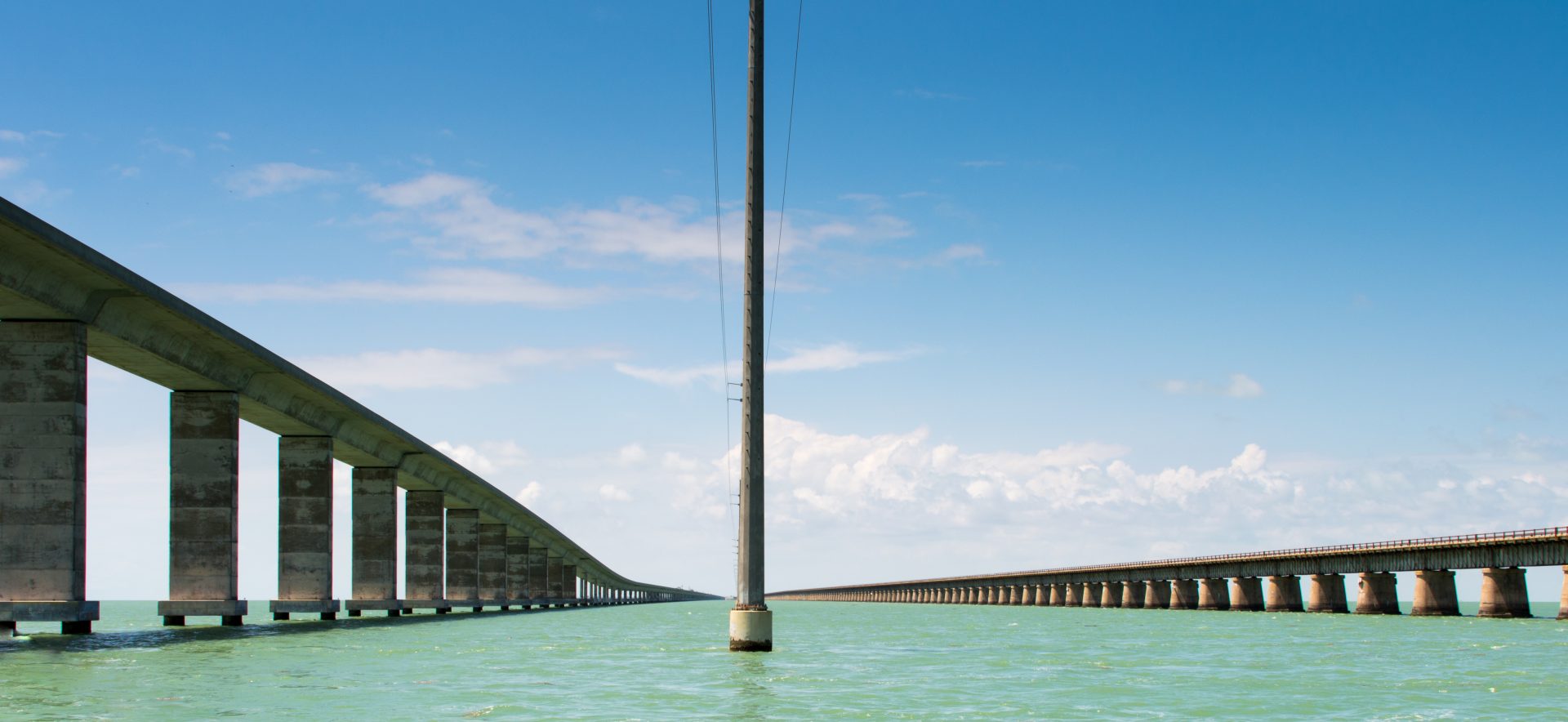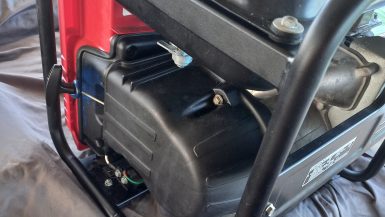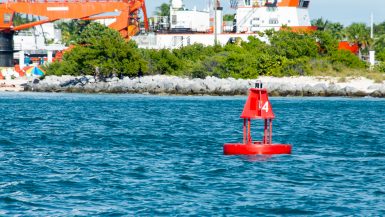It’s been a year since I made the six-day (just under 700 miles, at around 4 – 5 knots) solo sail around the coast of Florida from Fort Myers to Jacksonville between Hurricane Irma and Hurricane Maria. As is commonly the case when sailing to a schedule, I had a week to move a boat that was ill-prepared between two hurricanes; the trip had some highlights:
- By the end of the journey all systems failed, I had sails and a solid hull left.
- The weather window was not the best, super light winds all six days. Morgans are not known for their light air sailing abilities.
- I was closing in on the end of my time-off work window, so in a rush to get done.
While this trip by far was my most adventurous, it was successful, and the boat was now relocated where I could live on it and also start work on bringing the boat back to operational status.
What’s Happened In A Year
The boat purchase, repairs (at a location across the state), paying for docking and temporary housing at the same time left my finances shattered to pieces. So, 2018 started at the bottom with nowhere to go but up… a long and strenuous up.
I’m usually a “function over looks” type so initially started with a focus on restoring all the systems to functionality. Since I live on the boat while at the same time trying to restore it, it quickly became clear that I need to resolve my storage issues. Because of leaks during the rainy season (which is every day in Florida), a lot of the storage areas were off limits. Rain would come through leaks caused by poorly sealed portlights and deck hardware. These leaks would stream down the hull insides and into the storage areas on the way to the bilge, damaging anything not waterproofed.
Another issue that came out as the three days of Florida Spring turned into Florida “Burning Hellfire” Summer was the grey non-slip areas of the deck. I’m one of those people that walk barefoot 99% of the time when not at my day job, and I couldn’t stand the pain caused by walking on the decks during the daytime. Painting the decks, and as a first step repairing the areas that had water intrusion, became a focus.
So my priority turned to plug the leaks, removing the moldy vinyl lining and painting the interior and exterior of the boat. Demolition, cleaning, sanding and painting the insides of the boat has been a labor-intense challenge. Unlike a house which has four squarish walls per room, a boat is square wood construction crammed into a rounded structure. Each area painted requires an expert level skill set in yoga and patience.
Coupled with some “emergency projects” here is what has been done in the 365 days since the trip:
- Removed most of the teak on the exterior of the boat. I replaced this with Plasteak recycled plastic pieces. They look almost as good as teak and require no maintenance.
- Cut out the rotten deck at the bow where the windlass is located and replaced with foam core (won’t rot) and replaced the fiberglass.
- Started to replace some of the deck hardware and re-bedding it.
- Painted the gloss and non-slip (with Kiwi Grip) areas of the deck and cockpit.
- Replaced all the gauges and switches in the helm station.
- Replaced the heat exchanger, alternator, raw water intake and hoses on the engine
- Removed the vinyl liner, faired the hull, and painted 75% of the boat interior. This includes two coats of primer and two coats of gloss (easy to clean).
- Remodeled the forward head including new head and fixtures.
- Rebedding the port lights, removing one portlight, and sealing the mast holes as they pass through the deck to eliminate leaks to the inside of the boat.
- Emergency Project – Starting to replace the 110v system due to wire corrosion. I’ve replaced the shore power connection but realized I was just chasing one lousy section to the next lousy section, so I’ve currently by-passed the standard 110v system and will replace the complete electrical system as soon as the interior painting is done.
What The Next Year Brings
By the end of October I should have all the leaks fixed in the boat, well it’s an old boat so let’s say most the leaks as this is an ongoing project with old boats and the internal painting will be done. I can now focus on system replacements and upgrades which, except for the electrical system, are more money intense. Here are the things we’ll tackle in 2019 (in a rough list by planned order – here’s my whiteboard of projects):
- Re-engineer and replace both the 110v and 12v electrical systems.
- Replacement of the freshwater system. I tested this system in Fort Myers, and there was a leak under pressure. I’m hoping this is only the lines (which I plan to replace with a pex system) and the tanks are in usable condition.
- Remodel the Galley. I need to remove the propane burners and replace with a gimballed stove (burners and oven). Install all new propane system. Put in a couple of cabinets and redefine the ones that are there for better storage. I’ll be converting the old ice box into a dry storage area.
- Add an arch and solar power system to the boat.
- Remodel the aft head. Currently, there is no toilet or black tank for this area. Instead of installing all that again (I don’t need two heads) I’m going to convert the aft head into a wet room. I’ll take out the tank and place a scuba tank holder in that area. This room will also be where wet-weather gear, fenders, etc. get stored.
- Remove and replace all the deck hatches. These are old and need to be resealed anyway. I’m going to replace them with more robust offshore versions.
- Install a new anchoring system. I’m going to upsize the anchor and chain which will require the installation of a new windlass
- Replace the older non-self-tailing genoa winches with self-tailing winches
- Install a dodger and bimini
My Take-Aways
As I’ve said, I come from the offroad world. The skill set, other than planning for self-sufficient journeys and mechanics, has prepared me for a boat project. I’ve had to learn a lot of new skills and learn how to handle new pressures from taking on a long-term project like this. Here are some of the things I’ve learned about restoring old boats:
- A towing service subscription like SeaTow or BoatUS is invaluable. The cost of a single tow will cover a few years of payments. Until you’ve had the chance to go through and build confidence in your engine and systems, this is the first thing I would purchase.
- Tools. The right tool for the right job will make your life so much easier, especially as you regularly find yourself working in tight quarters and uncomfortable positions.
- Patience (not my strong suit). This is a marathon, not a sprint. Take what you plan to do each day and cut it in half. Each project will take longer than anticipated and project scope will quickly creep. Replacing the heat exchange went from a 2-hour job to weeks as I ended up replacing some items that were easier to deal with by not having the heat exchanger in the way.
- Accept good enough. I’ve improved my skills as I’ve gone through projects. The first area that I painted is not as good as my last. But to move forward, I’ve learned to accept “good enough” for an area and moved on. I can also come back and improve something down the road. My goal is to travel, not have the prettiest boat.
- Minimalism. Go small and go now (or sooner). The more things you try to have on a boat, the more systems you need to support them. Living at a dock, with its endless supply of electricity, I have two small fridges, a portable freezer, and an inoperable ice box conversion. If I kept all that and fixed the icebox, I’d need double the planned solar to support it. I’ll only keep the two small fridges (making one a freezer), turn the icebox area into dry storage, and sell the portable freezer to keep things simpler and require less work/expense.
- Enjoy the small wins. Similar to when I owned my businesses the challenge of this project has been to keep the mental game sharp. It’s easy to get bogged down. So, savor each win to it’s fullest. Enjoying a drink with ice is awesome when it’s taken you forever to figure out the fix for the freezer, and you’re standing in a pool of your own sweat because it’s 90 degrees / 97% humidity in the Florida Summer.




